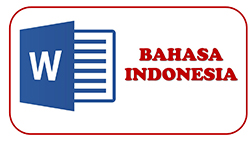Pembelajaran Persamaan Trigonometri Berbantuan Desmos dengan Model Pembelajaran Probem Based Learning dalam Meningkatkan Hasil Belajar Peserta Didik
Abstract
This study aims to improve student learning outcomes at SMA Unggulan BPPT Al Fattah Lamongan through a problem based learning (PBL) learning model assisted by the Desmos application. This study used a classroom action research design which was carried out in three cycles. Each cycle consists of four stages, namely planning, implementation, observation and reflection. Data collection techniques using tests and non-tests (observation). The data analysis technique used a quantitative descriptive analysis technique. The results showed that in cycle 1: student learning outcomes, including in the cognitive domain, the average student learning outcomes were 77.16 and 75% completeness. In the psychomotor domain, the average learning outcomes of students are 74.79 and the completeness of students is 75%. Affective Rahah, the average student learning outcomes are 79.42 with 71% completeness. In cycle 2: student learning outcomes, including in the cognitive domain, the average student learning outcomes are 80.54 and completeness is 75%. In the psychomotor domain, the average student learning outcomes are 75.21 and the completeness of students is 75%. Affective Rahah, the average student learning outcomes are 79.73 with 75% completeness. In cycle 3: student learning outcomes, including in the cognitive domain, the average student learning outcomes are 82.91 and completeness is 75%. In the psychomotor domain, the average student learning outcomes are 78.12 and student completeness is 75%. Affective Rahah, the average student learning outcomes is 79.42 with 75% completeness. So it can be concluded that the PBL learning model assisted by the Desmos application can improve student learning outcomes on trigonometric equation material
Downloads
References
Arends, R. I., & Kilcher, A. (2010). Teaching for Student Learning: Becoming an Accomplished teacher. Oxon: Routledge.
Ayu, R., & Dwiwansyah Musa, L. A. (2020). Pengaruh Penerapan Metode Pembelajaran Lattice Terhadap Hasil Belajar Matematika Peserta Didik. RPM (Jurnal Review Pembelajaran Matematika), 5(1), 30-39. doi:https://doi.org/10.15642/jrpm.2020.5.1.30-39
Dimyati, & Mudjiono. (2006). Belajar dan Pembelajaran. Jakarta: PT Rineke Cipta.
Ebert, D. (2015). Graphing Projects with Desmos. The Mathematics Teacher, 108(5), 388-391.
Isroil, A., Budayasa, I. K., & Masriyah. (2017). Profil Berpikir Siswa SMP dalam Menyelesaikan Masalah Matematika Ditinjau dari Kemampuan Matematika. Jurnal Review Pembelajaran Matematika, 2(2), 93-105. doi:https://doi.org/10.15642/jrpm.2017.2.2.93-105
Isro’il, A. , Sukiyanto, S., & Pujiono, P. (2020). Proses Berpikir Siswa Madrasah Aliyah dalam Membuat Peta Konsep Turunan Ditinjau dari Gaya Belajar Visual, Auiditori dan Kinestetik. CENDEKIA, 12(2), 143-154. https://doi.org/10.37850/cendekia.v12i2.125
Muhtadi, A. (2019). Pembelajaran Inovatif. Jakarta: Kementrian Pendidikan dan Kebudayaan.
Siswono, T. Y. (2008). Mengajar dan Meneliti. Surabaya: Unesa University Press.
Soedjadi, R. (2000). Kiat Pendidikan Matematika di Indonesia. Jakarta: Direktorat Jenderal Pendidikan Tinggi Departemen Pendidikan Nasional.
Umma, D. L. (2018). Pengaruh model pembelajaran Problem Based Learning (PBL) terhadap hasil belajar matematika siswa Pada Materi Pokok Polinomial kelas XI SMA Negeri 1 Ngunut. Tulungagung: IAIN Tulungagung Skripsi Tidak Dipublikasikan.





.png)










